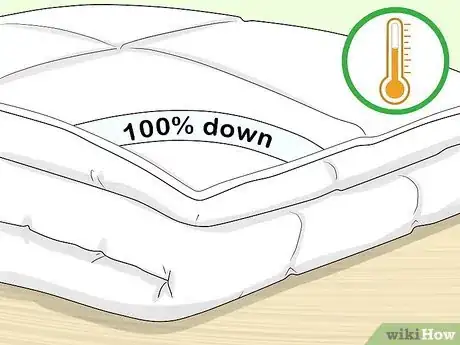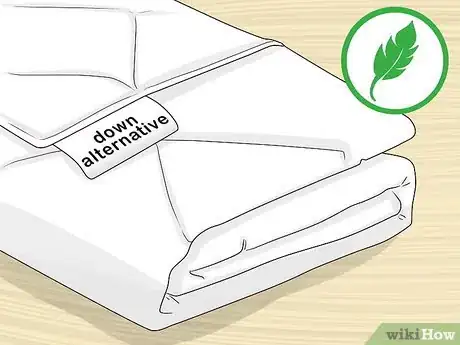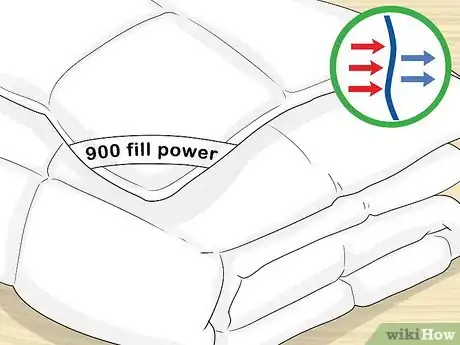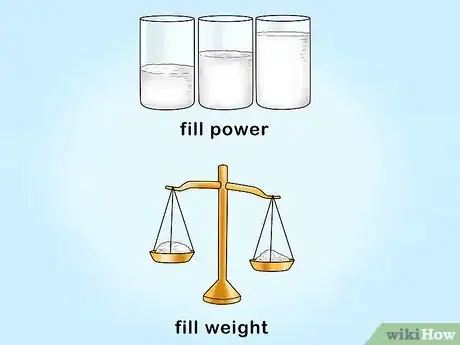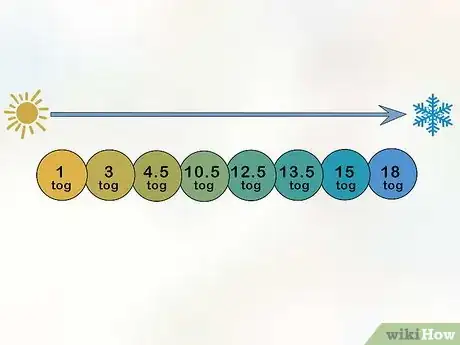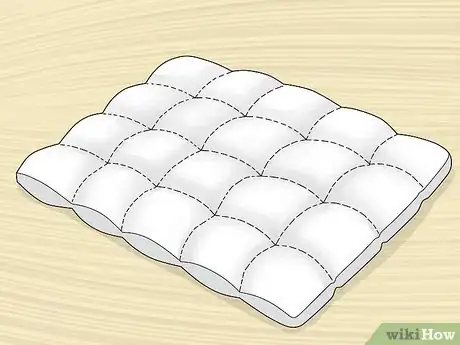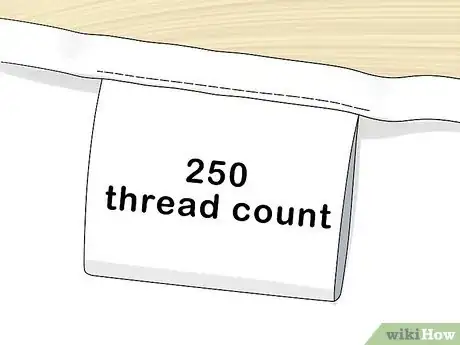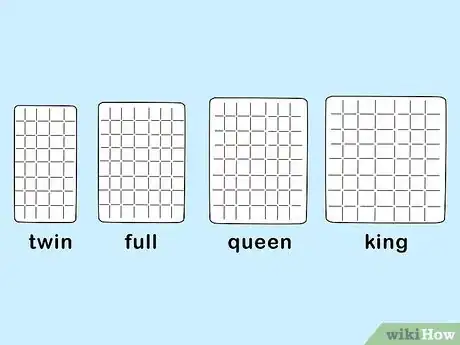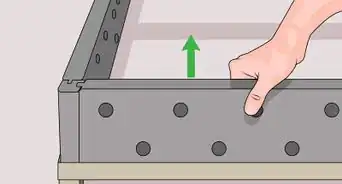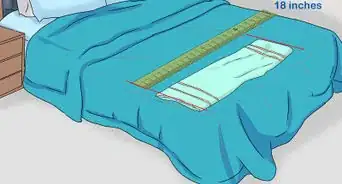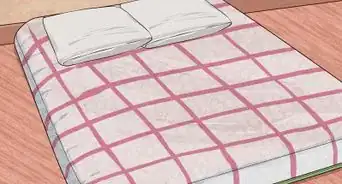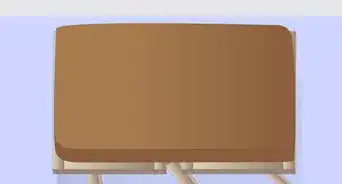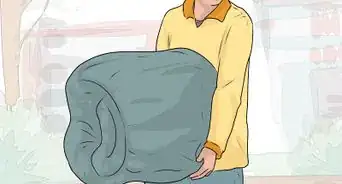This article was co-authored by Garrison Hullinger. Garrison Hullinger is an Interior Designer and the President of Garrison Hullinger Interior Design (GHID). With more than 15 years of experience, he specializes in client-centered design that balances beauty and warmth with comfort and functionality. Garrison and GHID’s work has been featured in numerous publications such as The New York Times, The Wall Street Journal, and Interior Design Magazine. Garrison attended Oklahoma Christian University.
There are 8 references cited in this article, which can be found at the bottom of the page.
This article has been viewed 27,597 times.
Duvet inserts are fluffy quilts filled with either natural down (“duvet” is French for down) or other natural or synthetic materials. When used with removable covers, duvet inserts eliminate the need for a top sheet and allow you to change up your bedding style more frequently. Before you buy, you’ll need to understand the different kinds of fills and constructions in order to make the perfect pick.
Steps
Choosing a Fill
-
1Get a duvet insert with a natural down fill if warmth is your top concern. Natural down is the soft inner plumage of geese and ducks. It is composed of fluffy filaments that contain air and body heat, and it provides excellent insulation in a duvet. Check the label to see if the fill is “100%” or “pure” down, or a blend that also contains feathers or synthetics.[1]
- Down may be composed of whole down clusters, fibers, or plumes (small feathers). “Loft” may refer to the percentage of whole down clusters in the mix, and a higher loft makes the down more resilient and better at containing warmth.[2]
- Goose down is more voluminous than duck down, and it is generally more expensive and considered to be finer and more luxurious.[3]
-
2Consider a down alternative if you want a less expensive or hypoallergenic duvet. Natural down may be processed to reduce or remove allergens, but some allergy sufferers may need to choose a synthetic fill instead. Duvet inserts with down alternatives may be filled with natural fibers such as cotton or wool, or synthetics such as polyester. Synthetics are generally less expensive, and better for allergy sufferers, but they may not have quite the feel of natural down.
- If you’re looking for a synthetic, squeeze the fiberfill between your thumb and forefinger: if it rubs together smoothly and feels slightly slick, it will be less likely to clump in the long run.[4]
- In addition to being hypoallergenic, duvets with synthetic alternatives may be the right choice if you’re maintaining a vegan household.[5]
Advertisement -
3Get a duvet with a higher “fill power” for superior insulation and warmth. Fill power is a measure of the size of down clusters used, ranging from around 500 to 900. An insert with a higher fill power is lighter, fluffier, and less dense because of the larger clusters used, which provide better insulation than smaller clusters because they trap more air. Goose down generally has greater fill power than duck down.[6]
-
4Don’t confuse fill power with fill weight. Duvet inserts with a greater fill power have more volume, but because they are less dense they often have a lower fill weight. A higher fill weight may suggest a greater firmness to the insert when judged relative to the fill power, but it does not generally mean that the duvet will provide better insulation.[7]
-
5Check the tog rating to accommodate warmer or cooler conditions or to suit your personal preference. The tog rating, which ranges from 1 to 18, is a measure of the overall thermal insulation provided by the duvet insert. The higher the number, the greater the insulation. A duvet insert with a lower tog may be more appropriate for summer, while an insert with a higher tog will provide more warmth in winter.[8]
Choosing Construction, Shell Material, and Size
-
1Get a “baffle-box” duvet for superior warmth and loft, or pick an alternative to suit your needs. Duvet inserts are made in several basic constructions: sewn-through, baffle-box, channel, and gusset. The type of construction will affect the extent to which the fill can shift in the duvet. You may or may not want the fill to shift.
- Sewn-through construction binds the top and bottom layers of the duvet together in a box pattern, which keeps the fill from shifting within the insert.[9]
- Baffle or baffle-box construction utilizes strips of fabric within the duvet to keep the fill from shifting while permitting greater fluffiness or loft relative to sewn-through construction.[10]
- Channel construction holds the fill within parallel seams or “channels,” which allows you to move it to different parts of the duvet, such as towards your feet, if you prefer. (If you sleep with a partner, this type of construction permits each sleeper to adjust the fill to his or her preference.)
- Gusseted duvets have fabric “walls” around the sides to increase the loft of the fill. They may have either baffle-box or sewn-through construction.[11]
-
2Check the thread count for the shell material, but don’t get more than you need. A higher thread count, or tighter weave, will ensure that the fill material will remain within the outer fabric, or shell, of the duvet insert. A thread count of at least 250 will do a good job containing the fill, and higher thread counts may be unnecessary for a duvet insert. All-cotton shells will further allow air to pass through to help puff up the down.[12]
- The material of the duvet should match the material of the sheets in terms of quality, to avoid friction occurring with the duvet.
-
3Get the right size duvet for your bed. Like sheets, duvet inserts come in several sizes, from twin to king. You may want to consider buying a duvet insert one size bigger than your mattress if you share it with a partner.[13]
-
4Purchase a duvet when the time is right. Duvets are widely available online through major retailers and specialty vendors, or at brick-and-mortar retail outlets that supply bedrooms and bathrooms. You may want to visit a store to physically examine the different kinds of duvets before making a choice. January “white sales,” when stores are clearing out their winter inventory for the spring season, are a great time to get deals on bedding.[14]
References
- ↑ https://www.nytimes.com/1987/11/26/garden/when-shopping-for-a-down-comforter.html
- ↑ https://www.daniadown.com/choosingduvet.htm
- ↑ https://www.telegraph.co.uk/interiors/home/the-best-duvets-for-a-good-nights-sleep/
- ↑ https://www.goodhousekeeping.com/home-products/comforter-reviews/a18163/comforter-guide-care/
- ↑ https://www.architecturaldigest.com/story/duvet-insert-terminology
- ↑ https://www.wholesalebeddings.com/wholesale-beddings-blog-posts/what-to-look-for-when-buying-a-down-comforter-duvet-insert-a-guide-wholesale-beddings/
- ↑ https://www.wholesalebeddings.com/wholesale-beddings-blog-posts/what-to-look-for-when-buying-a-down-comforter-duvet-insert-a-guide-wholesale-beddings/
- ↑ https://www.telegraph.co.uk/interiors/home/the-best-duvets-for-a-good-nights-sleep/
- ↑ https://www.wholesalebeddings.com/wholesale-beddings-blog-posts/what-to-look-for-when-buying-a-down-comforter-duvet-insert-a-guide-wholesale-beddings/
- ↑ https://www.nytimes.com/1987/11/26/garden/when-shopping-for-a-down-comforter.html
- ↑ https://www.wholesalebeddings.com/wholesale-beddings-blog-posts/what-to-look-for-when-buying-a-down-comforter-duvet-insert-a-guide-wholesale-beddings/
- ↑ https://www.nytimes.com/1987/11/26/garden/when-shopping-for-a-down-comforter.html
- ↑ https://www.overstock.com/guides/duvets-buying-guide/
- ↑ https://www.creditdonkey.com/when-bedding.html
